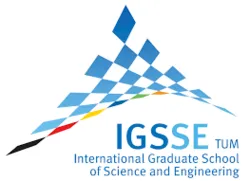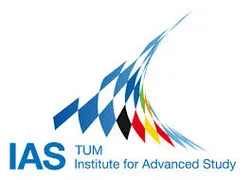29.01.2021
We are glad to communicate that our group SNE is now part of one of the newly founded TUM Innovation Network projects.
These are very challenging and interesting projects that want to generate an interdisciplinary momentum of research within TUM.
Prof. Alessio Gagliardi, Head of SNE, was recently nominated Coordinator of the TUM Innovation Network project
"TUM Innovation Network for Artificial Intelligence powered Multifunctional Material Design"
Congratulations!
Transdisciplinary teams, collective creativity, new ideas – and the freedom to explore these to the full: Our new TUM Innovative Networks are bringing top researchers and young talent together to collaborate across disciplines and academic cultures. They are building new connections between schools and departments and exploring forward-looking research topics with the potential to unlock highly promising fields of innovation.
Submit your application by September 15, 2020
If you are the coordinator of a team, send us your initial project idea (no more than three pages) by September 15, 2020.
- Submit your idea to: The idea inbox(log in with your TUM ID)
- Detailed funding guidelines (PDF, 330 KB) (MyTUM login)
- Any questions? Contact us at TUM ForTe – Office for Research and Innovation
Creative transdisciplinary projects
TUM Innovation Networks aim to foster innovative, high-risk, high-gain research projects spanning multiple disciplines. They are a central element of our institutional strategy, TUM Agenda 2030.
- Two new projects each year: Every year, the two most promising research projects are selected and awarded funding to onboard an additional group of up to ten PhD students and postdocs per project for a period of four years.
- Transdisciplinary teams: These projects bring together transdisciplinary teams comprising seven to ten principal investigators.
- Workshops to prepare funding decision: A selection of the submitted project ideas is further developed in an exploratory workshop run by TUM’s Institute for Advanced Study (TUM-IAS) before the President makes the final funding decision.
Our goal: TUM Innovation Networks promote new and strategic connections between schools and departments, building a foundation for research into tomorrow’s topics and creating a critical mass for future innovation hotspots. This process is designed to create a strong platform for new, competitive and collaborative projects such as excellence clusters or CRCs/TRRs, in line with TUM’s “Emerging Field Policy”.
Q&As
Every year, the university chooses two transdisciplinary research initiatives with project teams comprising seven to ten principal investigators (TUM professors and/or TUM junior fellows). The two initiatives receive funding to onboard an additional group of up to ten PhD candidates/postdocs and to cover equipment/resources for a total of four years, enabling them to strategically explore high-potential, future-focused research topics that are still in their infancy. Detailed funding guidelines (PDF, 330 KB) (MyTUM login)
Human resources: Each TUM Innovation Network may include up to ten PhD candidates and postdocs. Due to the strong focus on supporting PhD candidates, generally two thirds of personnel resources are reserved for PhD positions.
- Equipment/resources and travel expenses: Each Innovation Network is provided with up to EUR 100,000 for equipment/resources and undergraduate assistants. Each young scientist receives EUR 10,000 for the four-year funding period of the TUM Innovation Network. This funding is theirs to use for conference trips, speaker opportunities and trips abroad in line with IGSSE guidelines.
- Matching principle: One-third of the PhD/postdoc resources must be contributed by the project team (matched contributions where project principal investigators can also contribute existing PhD/postdoc positions that align with the research focus).
TUM professors with their own cost center are entitled to submit applications acting as coordinator (TUM Innovation Network Coordinator). In the first instance, three to five principal investigators based at TUM are required to submit an initial project idea. These may be TUM professors or TUM Junior Fellows.
Further principal investigators from TUM may then be added later on when the planned TUM Innovation Network is being finalized in a TUM Exploratory Workshop (in total, a maximum of seven to ten principal investigators); external scientists or researchers can also be included as associate members (not funded by TUM).
During an annual call for proposals, project partners must submit a project idea of no more than three pages in length via their coordinator using the online ideas inbox (log in with your TUM ID). The submission should include a description of the idea and the motivation behind it as well as a brief insight into the relevant research landscape.
The submitted project ideas are then evaluated by the TUM Innovation Network Board, which is made up of the following members:
- Senior Vice President Research and Innovation
- Director of the TUM Institute for Advanced Study (TUM-IAS)
- Director of the International Graduate School of Science and Engineering (IGSSE)
- Head of TUM ForTe – Office for Research and Innovation
- Head of Strategy & Excellence Development
- Along with up to six ad hoc members who have the requisite scientific expertise to evaluate the project snapshots
The TUM Innovation Network Board sends the President a short list of topics suitable for further development in TUM Exploratory Workshops. Once the President has made a decision, the teams who submitted the most promising project proposals are invited to participate in a dedicated, project-specific TUM Exploratory Workshop at TUM-IAS. During the two-day workshop, the project concept is developed further and finalized. Where necessary, further principal investigators can be included in the initial project team.
The TUM Exploratory Workshop are held approximately six weeks after the call for proposals cut-off deadline. The TUM Innovation Network Board may invite other internal TUM scientists and external scientists/researchers to the TUM Exploratory Workshops. However, usually no more than 20 people may participate in an Exploratory Workshop.
Project teams must submit a 10-page concept paper through their coordinator to the TUM Innovation Network Board no later than two weeks after the TUM Exploratory Workshop. This paper will be used as the final basis for making a decision about funding. The paper must list a total of seven to ten proposed principal investigators to be funded by TUM and also outline their respective roles and subprojects. Other external self-funded partners (universities, non-academic research institutes, businesses) may also be included as associate members.
The TUM Innovation Network Board evaluates the final concept papers and draws up a written opinion with rankings for the President, recommending which funding applications should be accepted and which should be rejected. The board may also suggest alternative funding formats (e.g. concrete preparation for a Collaborative Research Center initiative). The President makes the final decision on the award of funding for up to two TUM Innovation Networks per year.
All PhD candidates in a TUM Innovation Network are members of the International Graduate School of Science and Engineering (IGSSE). They complete the IGSSE’s coordinated qualification program and are supervised by two principal investigators (tandem supervision).
A mid-term review is carried out after two years by the IGSSE in collaboration with the TUM Innovation Network Board and selected experts. The review helps the project team and young scientists define focus areas, further strengthen the TUM Innovation Network and define its strategic direction.


